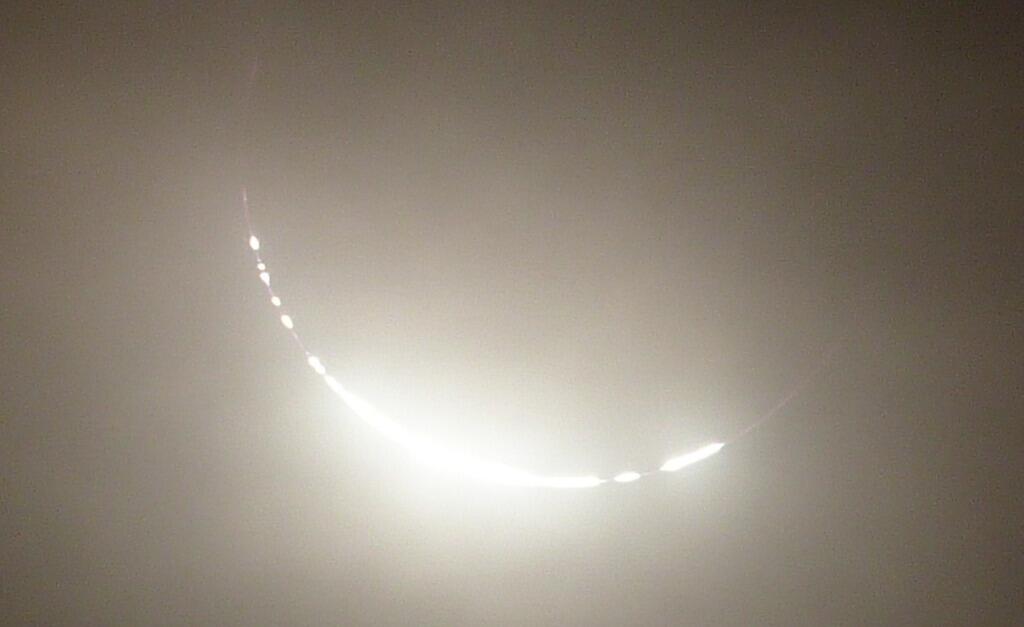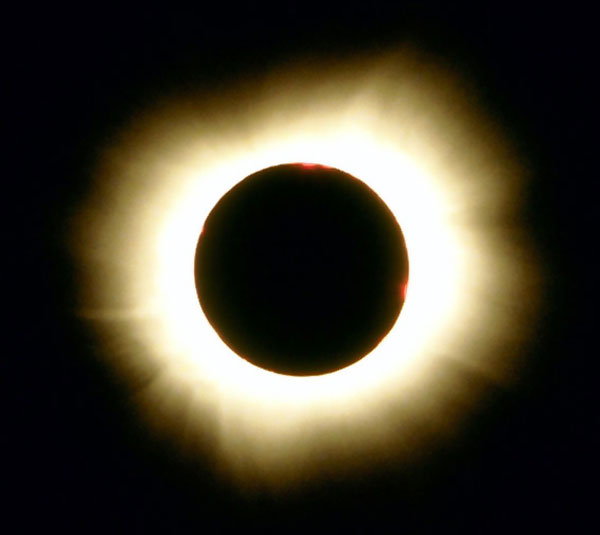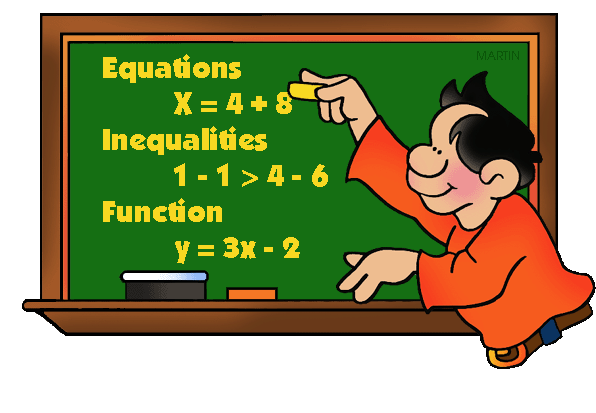—Henry David Thoreau
 |
| April 22, 2016 |
SCIENCE
Last year something cool happened:
On March 20, 2015, people from all over the world flocked to Svalbard, Norway, an archipelago about 500 miles north of the mainland, and the remote Faroe Islands, about 186 miles north of Scotland and 370 miles west of Norway, to witness something extraordinary -- a "supermoon total eclipse," which coincided with the spring equinox -- a rare occurrence that wouldn't happen again until 2034.
Want to see??
Before viewing the video below, read this
so that you'll know a few things to look for:
 A really spectacular visual phenomenon that occurs during a total solar eclipse is called "The 'Diamond Ring Effect'. It's part of Baily's Beads. When only one “bead” is visible, you'll briefly see something that resembles a diamond ring. This is caused by the sun's corona layer (creating the ring part) and a dazzling dot of its photoshpere shining at the edge.
A really spectacular visual phenomenon that occurs during a total solar eclipse is called "The 'Diamond Ring Effect'. It's part of Baily's Beads. When only one “bead” is visible, you'll briefly see something that resembles a diamond ring. This is caused by the sun's corona layer (creating the ring part) and a dazzling dot of its photoshpere shining at the edge.
Now, this will amaze you! Out of the total blackness of the eclipse, the sun's Corona -- the outer atmosphere of the Sun -- will become visible. Normally we can't see the corona because of the brilliance of the sun. A total eclipse, when the moon's shadow completely covers the sun's surface, provides us with a brief, rare glimpse of the solar atmosphere. Watch for an amazing display once the eclipse is total (around 1.24).
Now that you know what to look for,
Be Ready to be Amazed!
Thursday: Bill Nye: Video & Worksheet:
Ta-da-da. . . COMETS AND METEORS
Friday: TBA
SOCIAL STUDIES
For this week: tying up loose ends from last week.
(Go back for directions if you didn't finish.)
Once that is done, on to your very own Roman Mosaic!
Great Links:
 Make a Marvelous Mosaic directions
Make a Marvelous Mosaic directions
Printable Mosaics to color
Design a Mosaic Online
Make Your Own Mosaic Pattern
Have you completed? (Just asking. . .)
- Greek Alphabet chart
- Roman Numerals chart
Once that is done, on to your very own Roman Mosaic!
Great Links:
 Make a Marvelous Mosaic directions
Make a Marvelous Mosaic directions Printable Mosaics to color
Design a Mosaic Online
Make Your Own Mosaic Pattern
Ancient Greece--Ancient Olympics -- Quiz and word search--show me for credit
Greek Myths and Legends Podcasts

Language Arts
 |
| Little bits of me that escape to my page. . . |
Monday: You received a particularly awesome packet today with everything you need to know and do for this Exhibition Project. This is an important part of this trimester's grade, so be your amazingly creative selves and do your best work!
Today's assignment: Vocabulary (14 words, typed and tidy!)
Tuesday: Find a poem to analyze. (Search through my books or some from home.)
Wednesday: Type and illustrate the poem you chose to analyze. Using the template I provide, write your [brief] analysis of this poem. It will all become page 2 in your book.
Thursday: Complete poem analysis & illustration and turn in.
Friday: First poem! TBA
MATH
Monday: 8.5 (Review) Model and Solve Multiplication Equations. Practice and Homework, pgs.449-450
~and~
8.6 Solve Multiplication and Division Equations. Share & Show, pg. 453. Practice & Homework, pgs. 455-456.
Essential Question: How do you solve multiplication and Division Equations?
Monday, Review 8.5
Monday 8.6
Tuesday: 8.7 Problem-Solving * Equations with Fractions. Share & Show, pgs. 459-460. Practice & Homework, pgs. 461-462.
Essential Question: How can you use the strategy solve a simpler problem to solve equations using fractions?
Tuesday 8.7
A little more help. . .
Wednesday: Mid-Chapter Checkpoint, pgs. 463-464 Correct & fix.
Thursday: 8.8 Solutions of Inequalities. Share & Show, pgs. 467-468. Practice & Homework, pgs. 469-470.
Essential Question: How do you determine if a number is a solution or an inequality?
Thursday 8.8
Friday: TBA
Lesson 12
Test Friday!
 Monday: Hope your book is done. This is the month we write a formal Response to Literature
Monday: Hope your book is done. This is the month we write a formal Response to LiteratureTuesday: Using the template for the Response to Literature provided, begin your draft.
Wednesday: Work on your Response to Literature (Remember those direct quotes!)
Thursday: Begin typing your Response to Literature
Friday: Edit and revise your Response to Literature
DUE MONDAY!
The beauty of nature watercolor Earth Day Science gif S.S. banner boy creating mosaic image Mosaic image Dancing Penguin gif Poetry gif Math gif response to lit. gif typing computer gif spelling gif awesome sign














